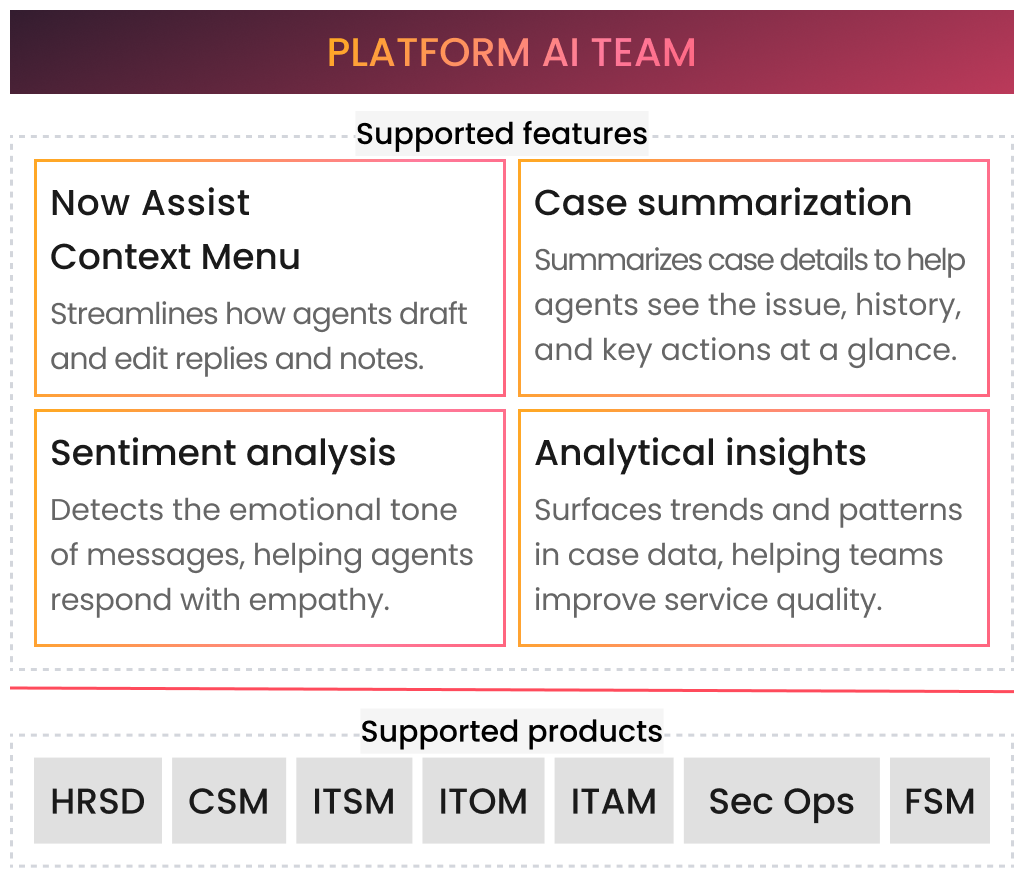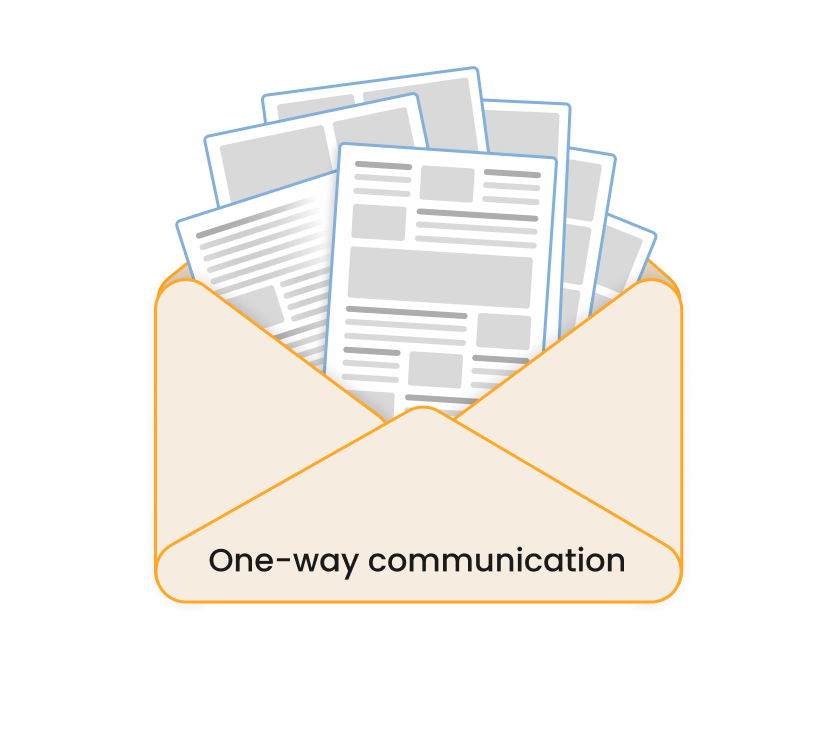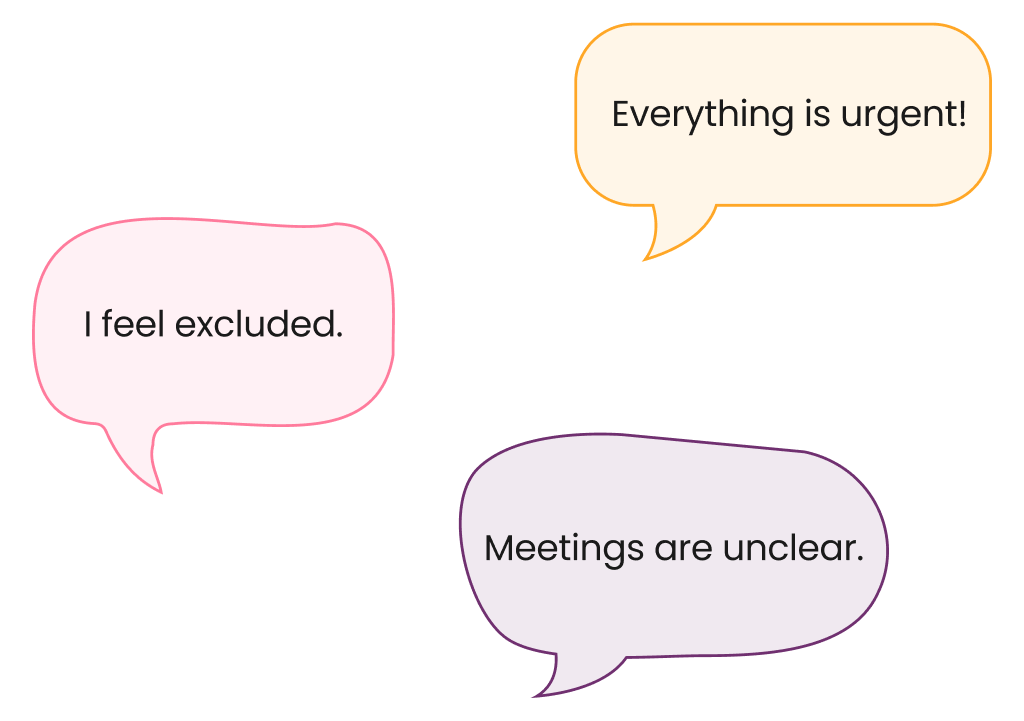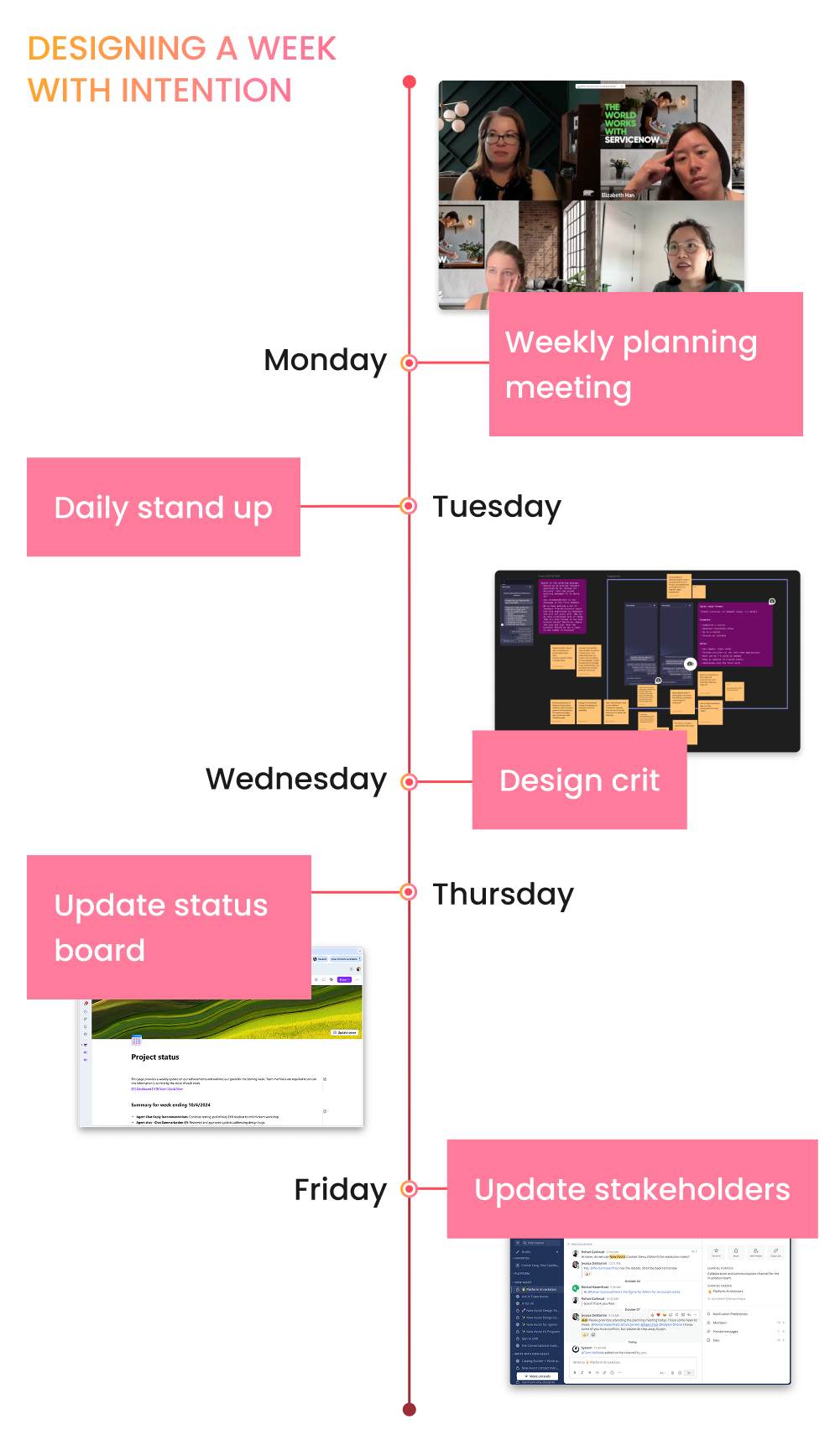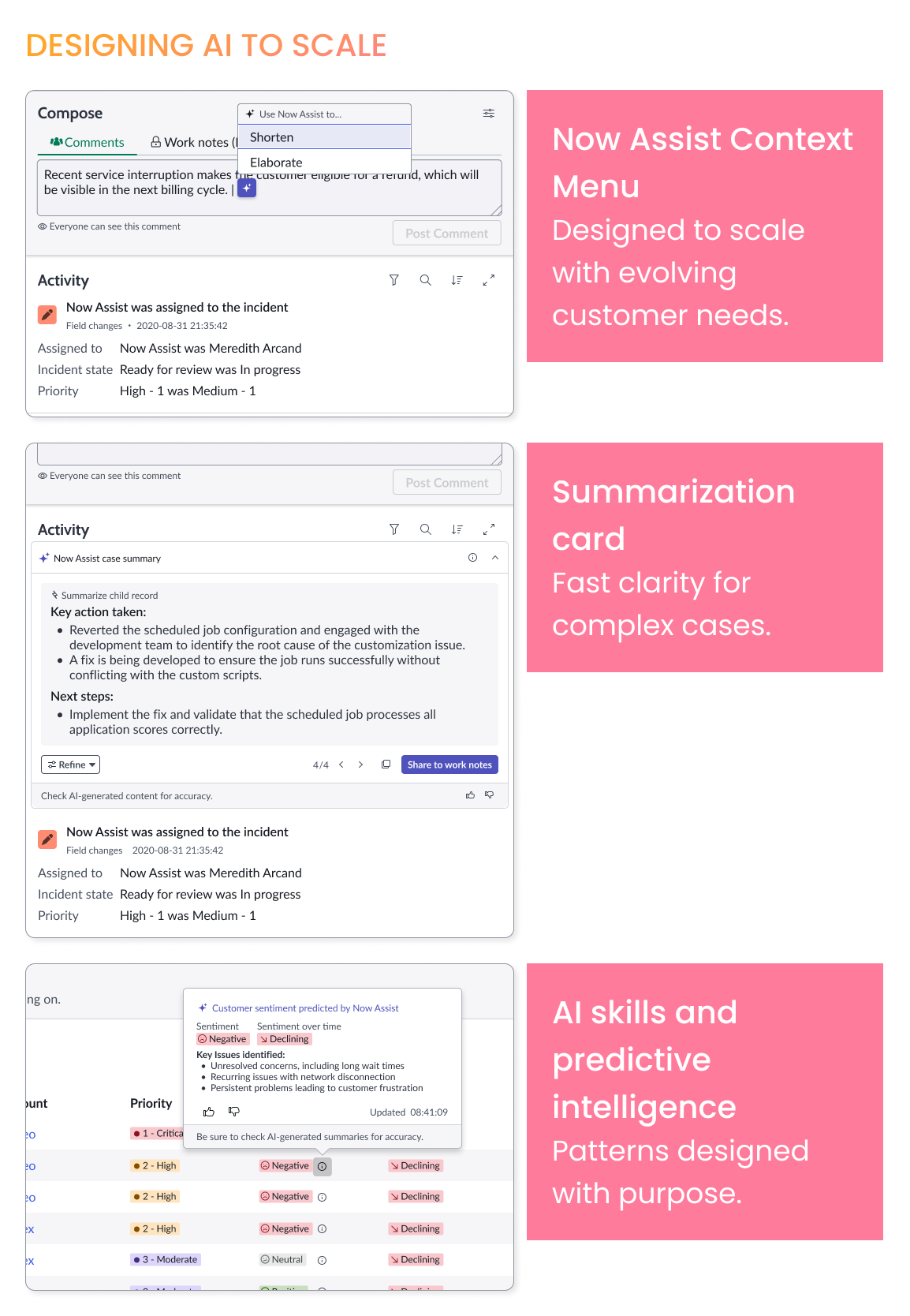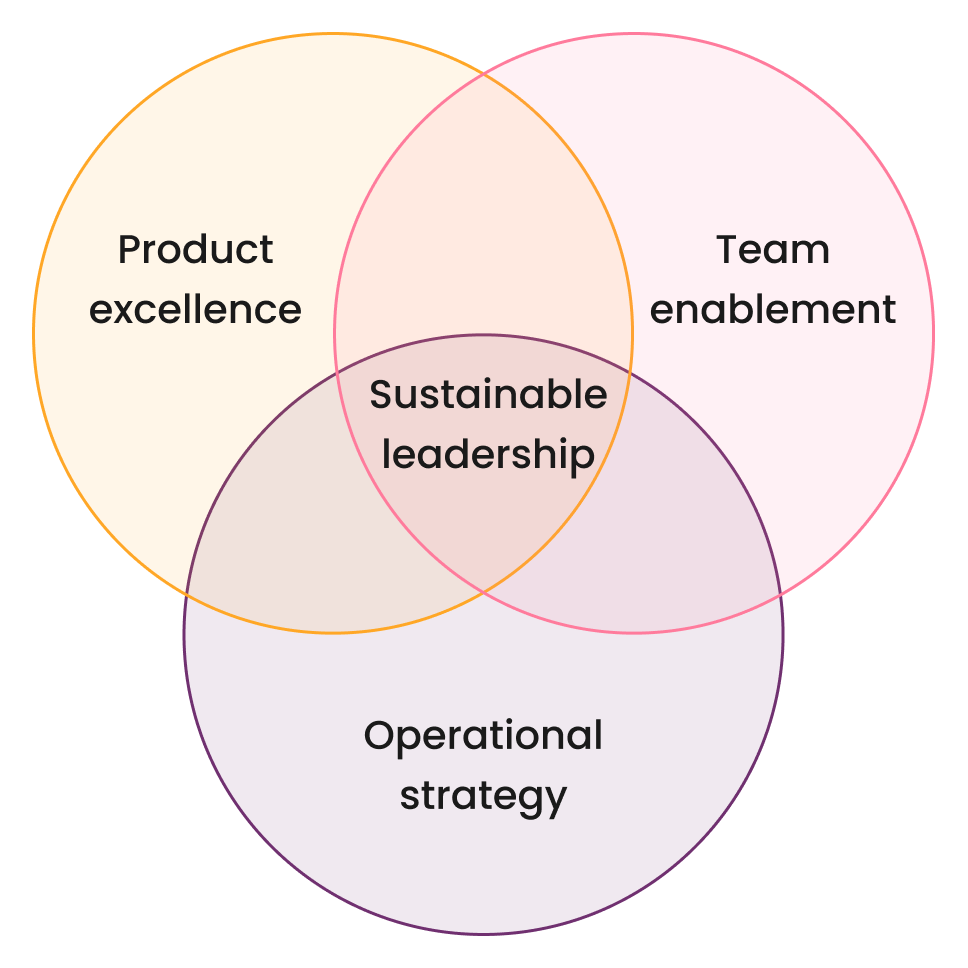As Platform AI Lead at ServiceNow, I wasn't just delivering features — I was transforming how the team operated. I led a distributed team delivering contextual AI experiences across the platform, serving frontline workers in customer service, IT, and HR. My mission: unblock progress, improve collaboration, and build a healthy team culture—especially across the messy seams of horizontal product work.
I brought clarity to ambiguity and order to chaos, making core or embedded designers feel heard, supported, and valued.
"Jessica is an exceptional design leader and partner. She builds strong cross-functional relationships, aligns early on goals, and balances customer insight with pragmatic delivery. Working with her felt like running a polished machine—clear priorities, seamless execution, and real momentum. I miss having a counterpart who brought such clarity and accountability."- Prerna Kholi, Director of Product Management
